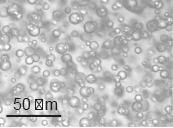
Contents
The course will illustrate how the conservation of mass, momentum and energy together with principles from non-equilibrium thermodynamics form the basis of the mathematical description of multi-component systems as for instance relevant for physiological transport processes and food-industry. Taking these fundamental description as point of departure, the most simple models for physical phenomena like phase-separation, interfacial tension, diffusion and Marangoni convection will be derived.
Insights from these fundamental descriptions will be used to analyse important processes that occur in structure development in mixing and dispersion. Examples are diffusion induced phase separation (DIPS), flow induced phase separation but also deformation, break-up and coalescence of drops and the role of surfactants. This, for instance, is of importance for polymer processing and drug-delivery systems.
Learning objectives
The main objective of this course is to introduce the balance equations of mass, momentum and energy for a multi-phase system. Starting from the singe-component case, the students systematically go through the derivation of the Cahn-Hilliard equations. They learn how hydrodynamics and thermodynamics are connected. By a rigorous scaling analysis of the equations the importance of the individual terms is quantified. The final teaching objective is to bridge the theoretical derivation to actual applications in both bio-medical and mechanical engineering.
Contact
-
Kay KoningJade dos Santosvan de Veenbaan3021WL Beverwijk